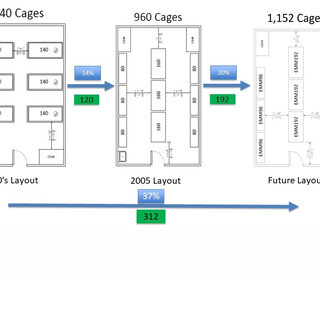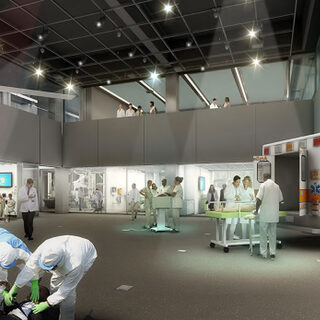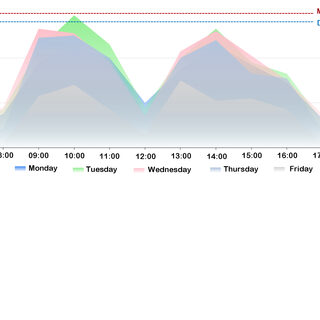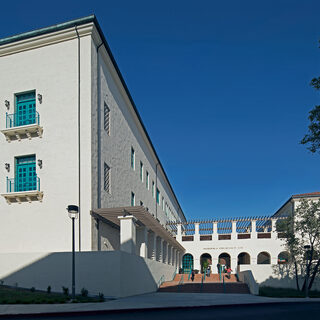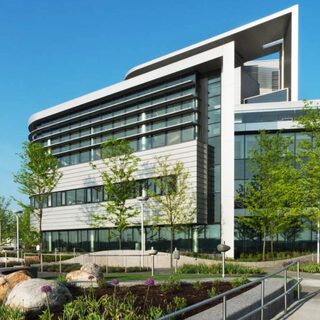Tradeline's industry reports are a must-read resource for those involved in facilities planning and management. Reports include management case studies, current and in-depth project profiles, and editorials on the latest facilities management issues.
Latest Reports
Building Systems, Technology Make the Vivarium More Efficient
Changing needs for vivariums have presented facilities managers with an array of challenges: creating more space for housing research animals within existing facilities; ensuring that the environments in which animals are kept meet guidelines set by scientific research agencies and organizations; and ensuring the spaces in which researchers conduct their experiments host well-run vivariums that contribute to, rather than inhibit, the ability to reproduce their results. Manufacturers are responding to these needs with more space-efficient caging systems, more precise and cost-effective environmental controls for animal holding rooms, and technology that can automatically track the health of animals in cages.
Designing Diverse Learning Environments and Maker Spaces
Multi-disciplinary project-based learning has changed how and where student activities occur, and institutions have responded by creating novel labs, teaching facilities, gathering areas, and maker spaces designed for students and faculty across diverse disciplines—engineering, life sciences, and liberal arts. A number of projects throughout the country highlight important design considerations—including location, flexibility, adaptability, and transparency—that suit new ways of learning and provide universities with opportunities for marketing and recruitment. Post-occupancy data from the University of North Carolina provides real-world findings that can help others improve the design of current and future maker spaces.
Data Analysis Key to Maximizing Sensor-Based Smart Technology
The vast array of Internet of Things (IoT) technology on the market today can tempt facility planners to install the latest gadget just because it is available. IoT technology offers a variety of tools, such as sensors and software that can be added to furniture or other facility assets, to allow these assets to connect and exchange data using built-in wireless connectivity. But to what end? Brian Haines, vice president of strategy for FM:Systems, cautions planners to look beyond the allure of new technology and to carefully assess which sensor or combination of sensors will produce data that advances specific institutional goals or addresses immediate facility concerns.
San Diego State University Advances STEM Program with Collaborative Engineering Facility
The new Engineering and Interdisciplinary Sciences (EIS) complex at San Diego State University (SDSU) was developed to create a modern hub of STEM-focused lab facilities that will enhance the university’s reputation as a leading research institution capable of attracting top researchers and students in a variety of disciplines. The multi-wing complex includes seven engineering teaching labs and 17 interdisciplinary research spaces focused on wireless technologies, energy, and bio-medical engineering, as well as viromics (viral metagenomics)—the study of virus gene sequencing and virus protein structures—which was pioneered by researchers at SDSU. In addition to providing a shared research core, the facility houses an MRI suite and a future materials science imaging center. The complex will focus on everything from developing artificial limbs and wearable health sensors to improving drone technology and finding better ways to screen for harmful microbes. A collocated entrepreneurship center with product and business development support will help bring new technologies and products to market.
Applying Passive House Design Principles to Labs and Hospitals
The Passive House building standard is considered the most rigorous, voluntary energy-based design and construction standard in the industry. Consuming 40 to 90 percent less energy than conventional buildings for heating and cooling, Passive House traditionally has been used in single-family homes, commercial buildings, schools, and office buildings, but the standard is making new strides toward application in energy-intensive laboratory buildings as well. While achieving true Passive House-level performance in a large-scale lab facility is still a far distant (if possible) goal, many of the standard’s fundamental design approaches can be used to significantly reduce energy consumption while improving occupant comfort and air quality.

